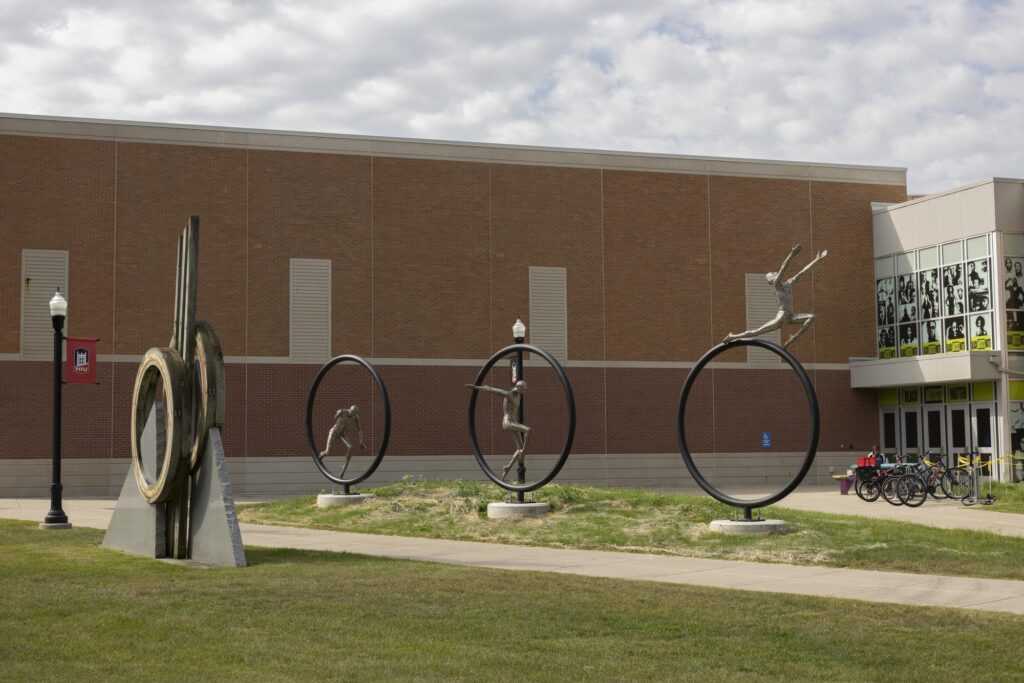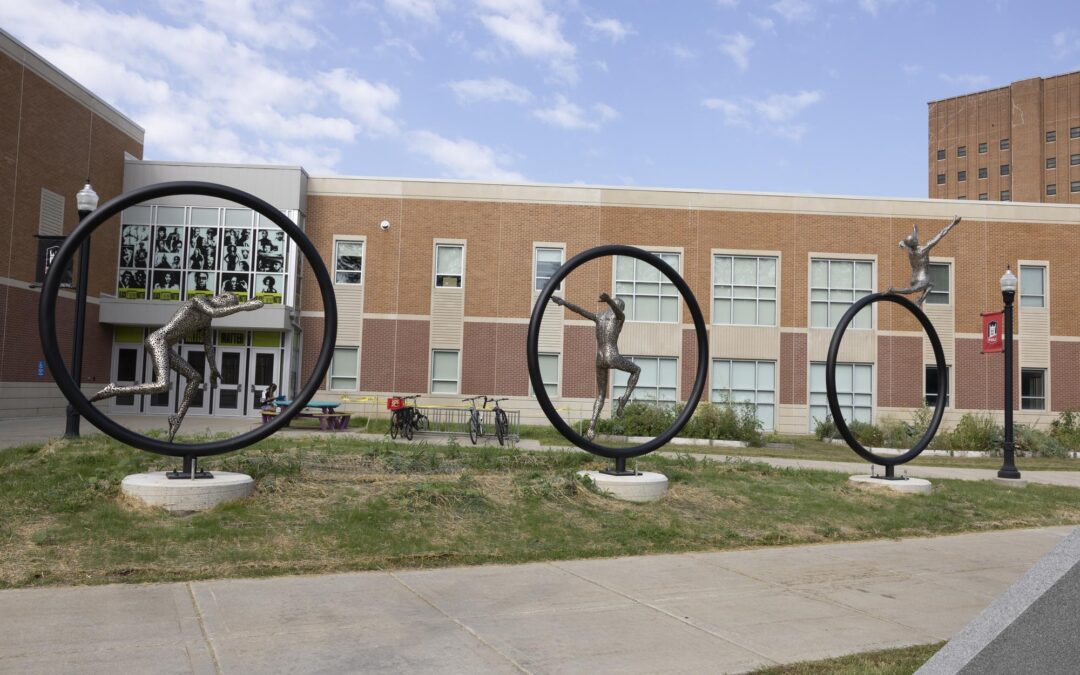A walk around the Northern Illinois University reveals a campus filled not just with students, faculty, staff and buildings, but of artwork to take in and enjoy. Now, there is even more to look at. The final piece of the extensive renovations to the university’s Stevens Building—home of the School of Theatre and Dance and Department of Anthropology—has been installed in the open area on the east side of the building, near the main entrance, and not far from the creek.
“The Tribesman, The Hero and The Light” is a free-standing stainless-steel sculpture consisting of figures and five-inch-thick steel circles.
The artist, Boyan Marinov, is a Chicago-based artist and furniture maker. Born in Veliko Turnovo, Bulgaria, Marinov studied cinematography at the Bulgarian Film School before moving to the United States to pursue his lifelong passion for woodworking. He has a studio in Chicago where he creates sculptures and operates a custom furniture shop.
To dedicate the sculpture, the NIU College of Visual and Performing Arts and College of Liberal Arts and Sciences are hosting a ribbon cutting and cookout at the sculpture site, Thursday, Sept. 26, from 11:30 a.m. to 1 p.m. Hot dogs, chips and drinks will be available, with a short program scheduled for noon.
“The sculpture is a wonderful addition to the east side of campus,” said Robert Brinkmann, dean of the College of Liberal Arts and Sciences. “It depicts the journey in life that all of us are on while representing the energy found not just within the Stevens Building, but throughout campus.”
Paul Kassel, dean of the College of Visual and Performing arts is excited about the opportunity for the sculpture to spark the imagination of those who view it.
“The pieces beautifully connect the three academic areas housed in the Stevens Building—theatre, dance and anthropology,” Kassel said, “But more than that, like all artwork on campus, I believe the sculpture will inspire creativity and reflection in anyone who encounters it. I’m already looking forward to what our students will devise, compose, and choreograph in and around it.”
The sculpture is presented in three parts. Designed as a series to be viewed as different parts of a story, or a study in the changing form and our own evolution.
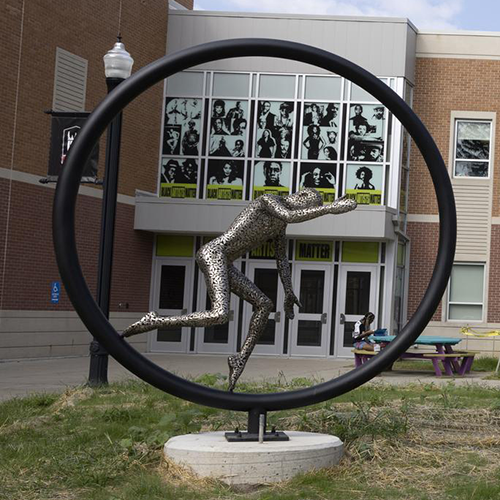 Act One: The Tribesman
Act One: The Tribesman
The grandest of all stories and the most grounded. The story of us, the whole human story. Finding ourselves within ourselves, our cultures and civilizations, beliefs and behaviors, truths and myths. Tracing our endless stories through the traces we leave. It demands that we treasure our differences as much as our similarities. That we see ourselves in ourselves – in our mothers, fathers, sisters, brothers. From those who made cave art tens of thousands of years ago, to those who’ll leave footprints on the next new world.
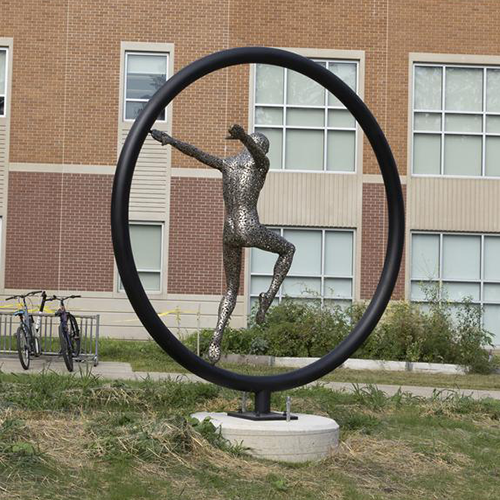
Act Two: The Hero
A reflection of life. Whether imagined or reimagined, it is a play between dialogue and song, action and interaction, drama and comedy, plot and character, time and place. We embody other lives, other stories, real and unreal, in places known and unknown. Conveying stories not just in verse but in the entire universe we create. Together, actors and audience alike.
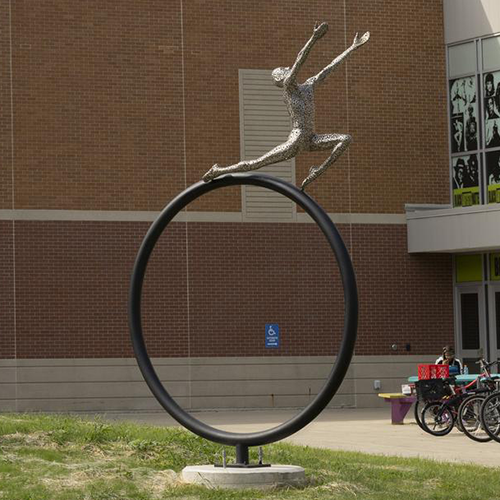 Act Three: The Light
Act Three: The Light
A breaking of boundaries, a story beyond words, even beyond narrative. This story is felt, conveyed through movement, through give and take. With our body as both canvas and instrument, we connect with what is most primitive about us and also achieve what is most poetic about our physical form. We communicate viscerally and universally through rhythm and emotion. As we have since the whole human story began.
“The Tribesman, The Hero and The Light” joins “Pyramus and Thisbe Rising Over Snowy Peaks,” both located near the main entrance of the Stevens Building.
“Pyramus and Thisbe Rising Over Showy Peaks,” is a large sculpture constructed of Vermont Barre granite and southern yellow pine created by Chicago artist Terrence Karpowicz. It is based on the Greek myth of two lovers destined to forever see each other but never touch. That sculpture was donated to the university in 1990 in memory of Sarah Lipschultz by her husband, M.A. Lipschultz.
